Common Potty Training Mistakes
How to read your toddlers signs and avoid these common potty training mistakes.
Read More![]() Let your child know what is happening. It can be daunting for them to suddenly start using a potty, so talk them through it.
Let your child know what is happening. It can be daunting for them to suddenly start using a potty, so talk them through it.
![]() The learning process will take time, so be patient, especially when they have accidents.
The learning process will take time, so be patient, especially when they have accidents.
![]() Don’t ditch the nappy right away. Instead, choose nappy pants or pull up nappy pants that are made for toddlers always on-the-go. Rascal + Friends premium nappy pants are made with jumping juniors in mind, and include an extra stretchy waistband, pull up design and easy-tear sides. Our 12 hour leak protection* means they’re great for overnight, or transitioning from nappies to nappy pants.
Don’t ditch the nappy right away. Instead, choose nappy pants or pull up nappy pants that are made for toddlers always on-the-go. Rascal + Friends premium nappy pants are made with jumping juniors in mind, and include an extra stretchy waistband, pull up design and easy-tear sides. Our 12 hour leak protection* means they’re great for overnight, or transitioning from nappies to nappy pants.
![]() Encouragement and positive reinforcement goes a long way in helping them adapt. Read below for ways you can make potty training fun.
Encouragement and positive reinforcement goes a long way in helping them adapt. Read below for ways you can make potty training fun.
Knowing when to start potty training is a common question with an answer as simple as: when your child is ready, there’s no one size fits all approach. Sometimes this starts as early as 18 months, in other cases it doesn’t happen until age 4. That said, most children typically start potty training between 18 and 30 months.
Potty training is more than simply using the potty. It involves the steps you take in teaching your little one how to use the potty and the cues you learn from them. For many kids, this is the first big step in their maturity and development, so you want to make this an enjoyable experience for all.
The following signs may indicate that your child is ready to start potty training:
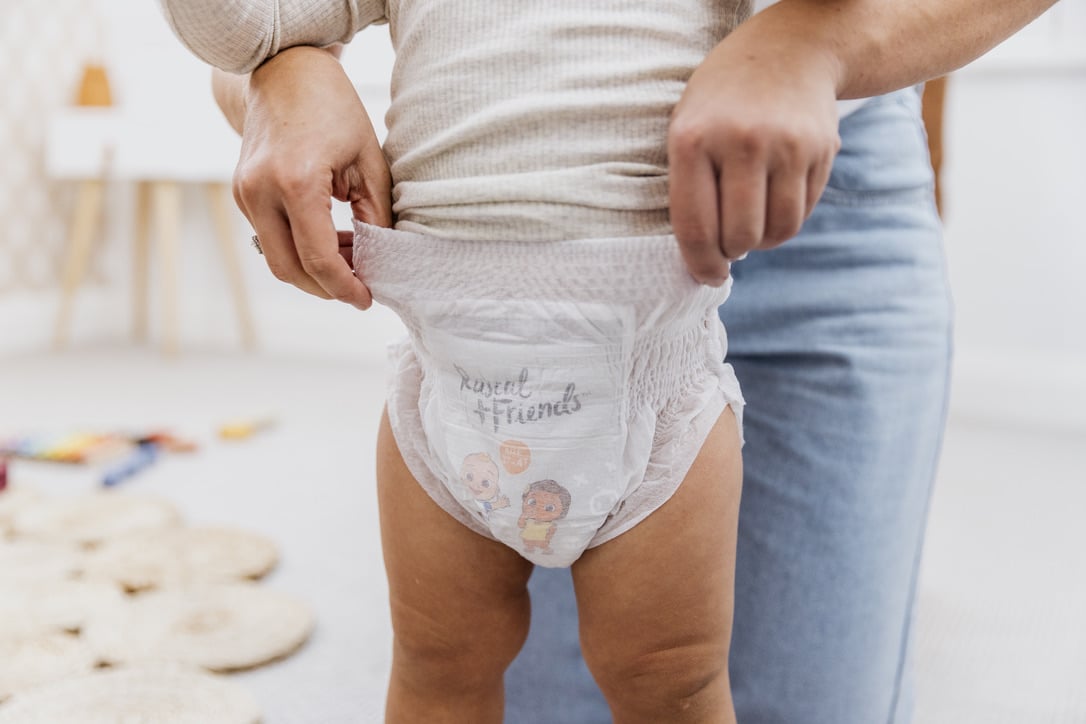
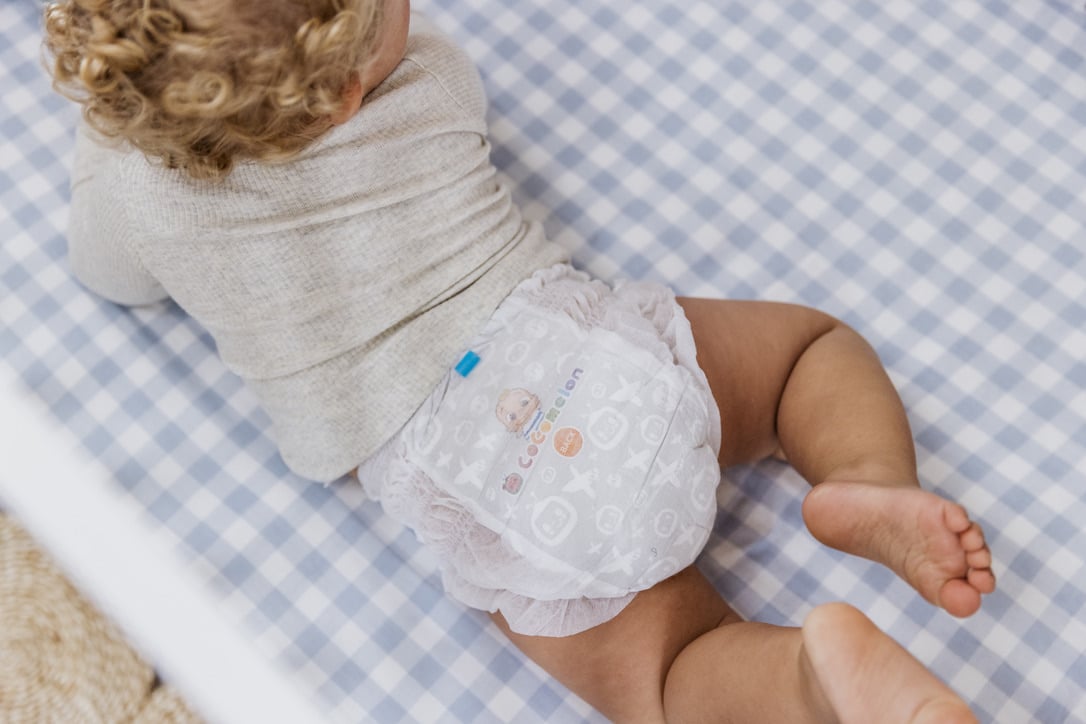
Successful potty training requires consistency and patience. As mentioned, timing is important – so try to avoid times where there could be major distractions or environmental changes, such as moving house.
Even before using the potty, there are a number of fun ways you can introduce it. Such as reading children’s books, teaching your little one what it looks like, or using craft activities like this colouring-in maze. Find more fun activities on our News + Resources hub.
You may also like to involve them in purchasing the potty, making the process fun from day one! This is also a good way to check that they sit comfortably on it.
Normalise the idea of going to the potty by introducing it into everyday conversation; saying things like: “I wonder if Jay Jay (or your child’s favourite character) needs to go potty” or “I have to go wee, I’m going to use the potty.” The idea is to raise awareness about going potty and make your child comfortable with the concept before introducing action. These techniques may also pique their interest and get them excited by the potential of trying it themselves.
You may like to follow a schedule or introduce key times throughout the day that they should go to the potty. For example, first thing when they wake up, every couple of hours, before leaving the house, before and after nap time and the final step in your bedtime routine. Even if they object to “not needing to go,” the ritual of going to the potty and through the motions involved with this process, reinforces the habit. Eventually, it should become part of their routine.
Make a habit of the routine by asking them to remove their pants, nappy, and sitting on the potty for a few minutes. Switching from nappies to Rascal + Friends premium nappy pants help make change-time easier and are perfect for potty training. Made with up to 12 hour leak protection, an extra stretchy waistband and easy-tear sides, learn more about our seriously good features and find the right size.
Teach good hygiene habits early on, and stick to them. The final part of “going to the potty” should include using toilet paper to clean, proper disposal and washing up. Make the sink, soap and hand towel accessible to them (you could use a stepping stool), and help them wash their hands with soap and warm water for at least 20 seconds.
Make hand washing fun with colourful soaps and singing their favourite song with them. With time, they may like to start doing this independently.
Essential to the potty training process is positive reinforcement and patience. It will take time for their body to adjust to using the potty, and accidents are part of the learning process. Try not to react to these occasions with frustration. Instead, offer reassurance, help them change into a clean nappy, and explain why we use the potty and what we can try do next time.
When they use the potty successfully, offer gentle praise or a small reward like a sticker chart. Positive reinforcement of their behaviour and what they did successfully also helps them learn.
Download: CoComelon Potty Training Charts

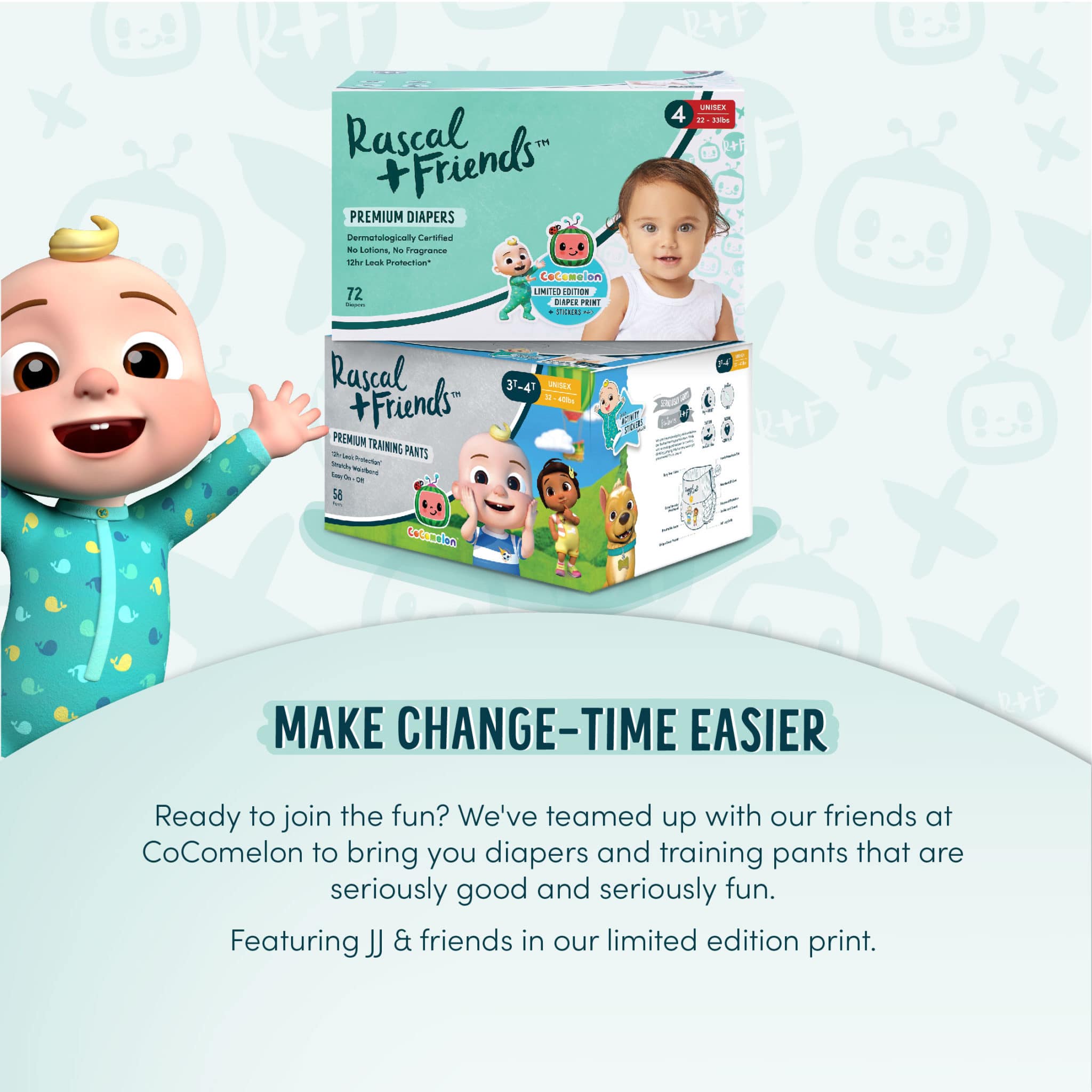
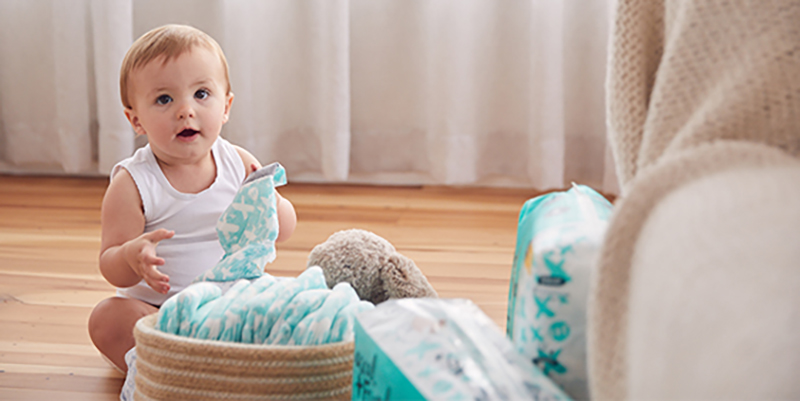
We’d love to stay in touch! Receive email updates about Rascal + Friends products, offers, blog articles and events. Unsubscribe anytime.

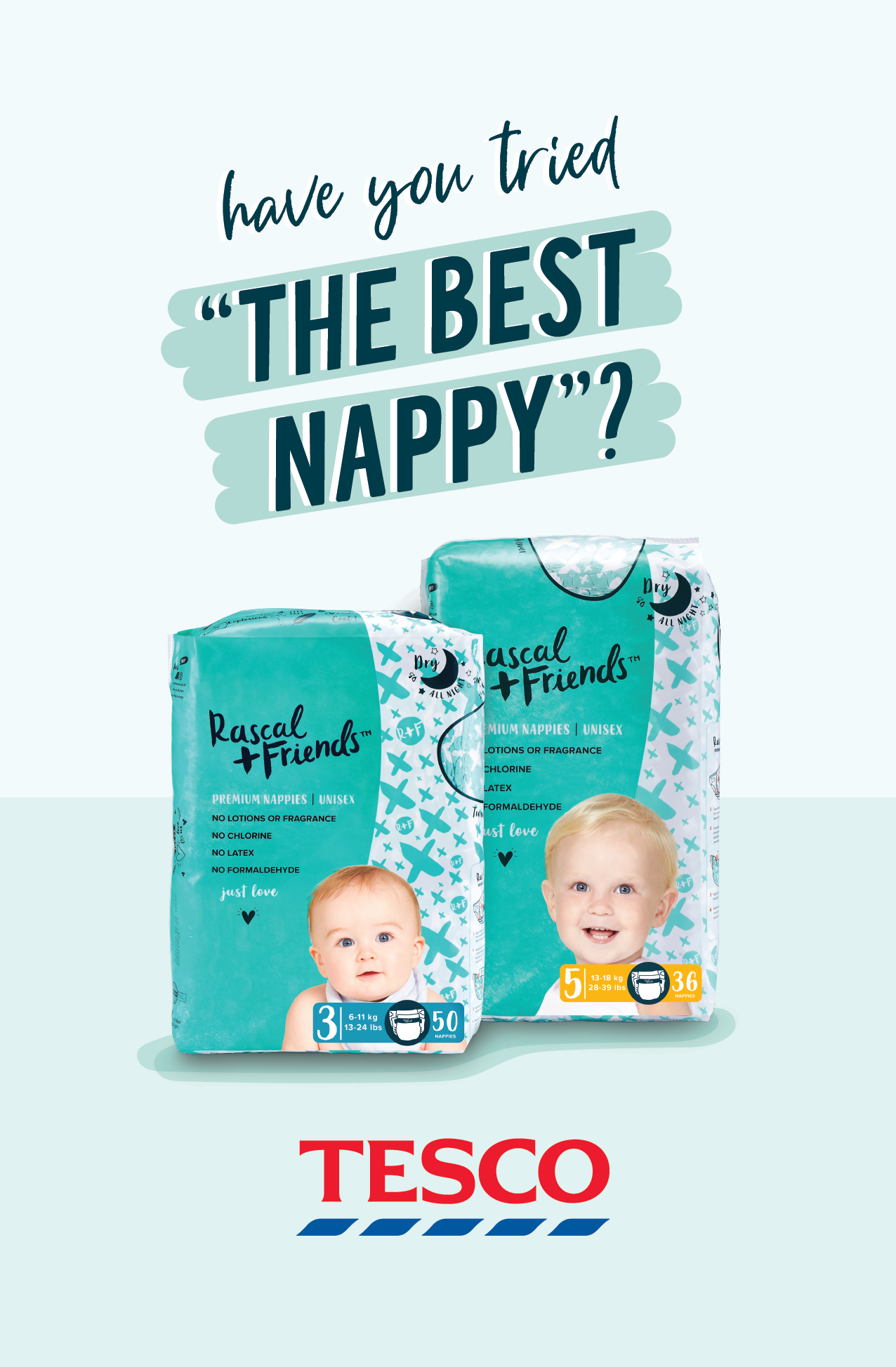
| Premium Original Nappy | Premium Eco Nappy |
|---|---|
| Gentle and absorbent topsheet | Gentle and absorbent plant-based topsheet |
| Non-woven fabric wrapped core | Sustainable tissue wrapped core |
| Water resistant and breathable film | Plant-based, water resistant and breathable biofilm |
| Soft and breathable backsheet | Soft and breathable plant-based backsheet |
| Soft recyclable packaging | Home/commercially compostable packaging |
| 3D core containing sustainable pulp | Core containing sustainable pulp |
| Double leak guards | ✓ |
| Soft leg cuffs for a comfortable fit | ✓ |
| No lotions, fragrance or latex | ✓ |
| Highback Waistband | ✓ |
| Custom designed grip tabs | ✓ |
| Up to 12 hours leakage protection* | ✓ |
*Hours may vary according to individual baby’s urine amount